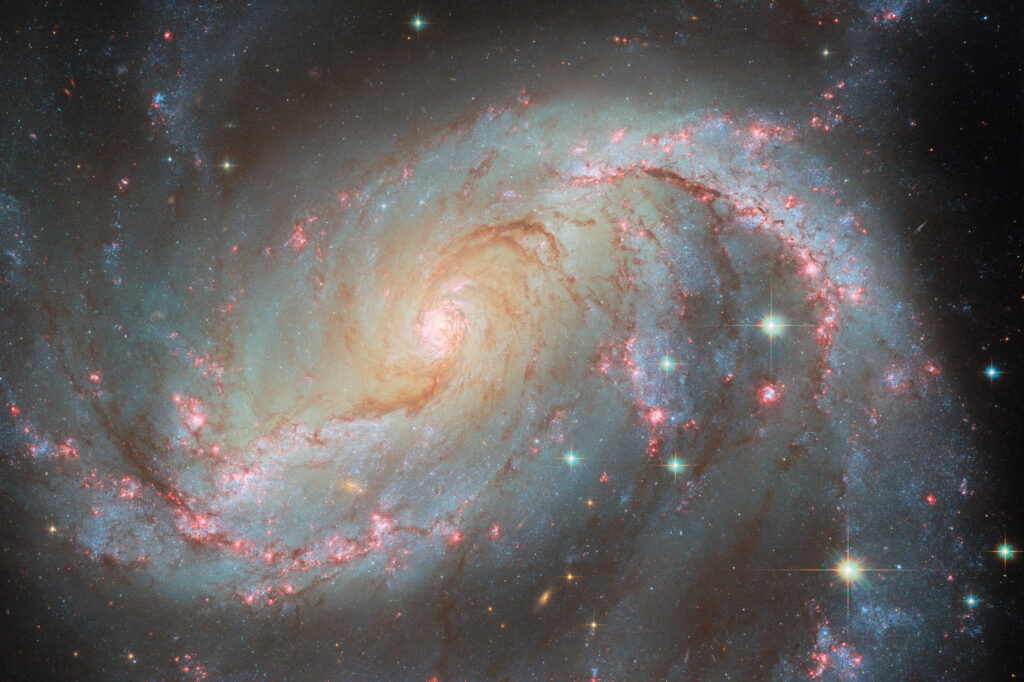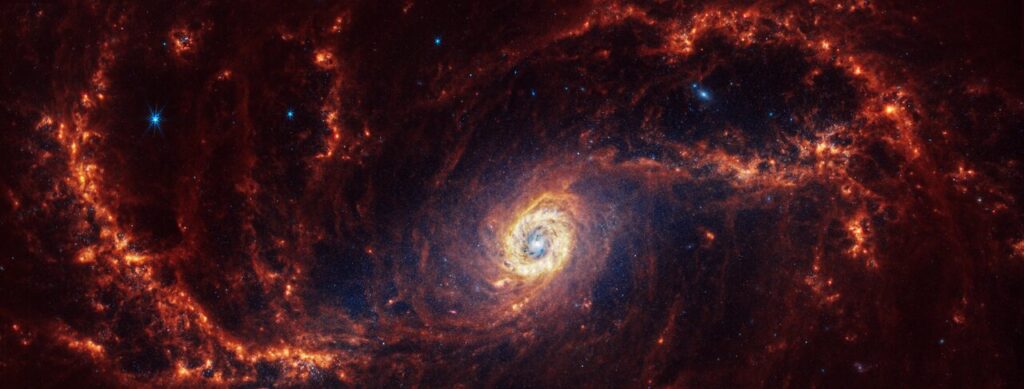Working with the Hubble telescope, astronomers have shared with the public another impressive image. This time the space observatory photographed the galaxy NGC 1672.

NGC 1672 is a spiral galaxy located 49 million light-years from Earth toward the constellation Doradus. As the Hubble photo shows, it presents a real light show. Like many spiral galaxies, NGC 1672’s disk is filled with billions of stars that give it a beautiful glow. The galaxy’s two large spiral arms are scattered with bubbles of hydrogen gas. They glow a bright red light due to the powerful radiation from the newborn luminaries within them.
Near the center of NGC 1672 are several particularly impressive stars. Recently formed and very hot, they are encased in a ring of glowing gas and emit powerful X-rays. And at the very center is an even brighter source of X-rays — an active galactic nucleus created by a heated accretion disk around a supermassive black hole.
But the high point of this image is the most fleeting and temporary of these lights: the supernova SN 2017GAX, visible in only one of the six Hubble photos that make up this image. It was a Type I supernova, the result of the collapse of the core of a giant star. By the time Hubble photographed it, it had already faded. It is visible in the photo as a small green dot, just below the bend of the spiral arm on the right side. In fact, it was done purposely. Astronomers wanted to find a companion star, which could have been the progenitor of the supernova and which would be impossible to see in the glow of its outburst.

NGC 1672 was also recently among the galaxies captured by the James Webb Space Telescope. Its images showed a ring of gas and dust structure in its spiral arms.
Provided by Esahubble


